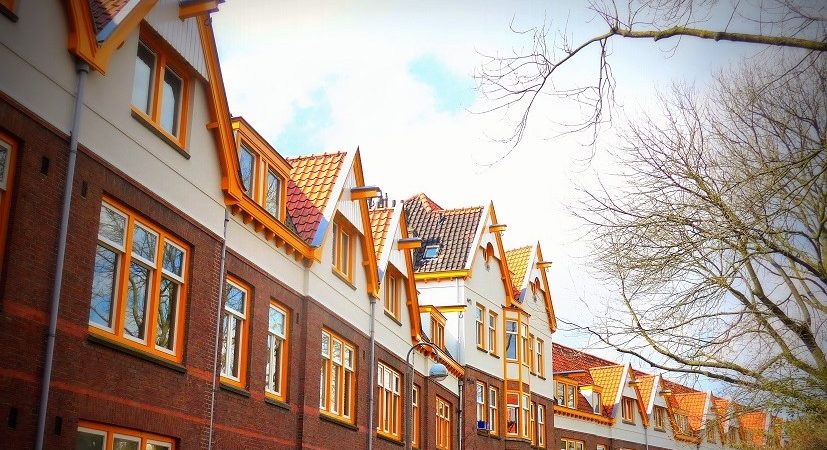Amsterdam is beaming with hoisting beams. Previously I associated hoisting beams solely with old merchant’s homes, but unlike other port cities where I’ve seen them, in Amsterdam they are found not only on the old canal houses, but all over the city, including on ordinary residential buildings.
Due to fifteenth century planning laws, facades of buildings were built of lightweight materials with large windows to reduce weight. The smaller the width of the frontage, the lower taxes had to paid. In the seventeenth century, the city became more prosperous and thus wider, double-fronted merchant’s homes sprung up. The merchant’s houses had attics and cellars which served as storage spaces for the goods that were transported by boat.
Since the houses were so narrow, the stairwells were too steep and narrow, making it largely impossible to carry up goods or furniture into the home. Thus beams were attached to the gables in order to hoist up (with a pulley and rope) large objects and load them through the large windows.
Another feature of the old buildings is their slight forward slant, which helps prevent the objects from colliding with the building facades as they are hoisted up.
Interestingly, newer buildings from later centuries also were built with narrow stairwells and hoisting beams. It seems certain building regulations or planning laws lasted well into the twentieth century. (Or maybe it was just because they wanted to keep up the old tradition and style.)
In any case, Amsterdam’s hoisting beams have not become obsolete. Though the ones on the centuries-old canal houses may no longer hoist up commodities, they are nevertheless a necessary feature used to lift furniture in the modern residential spaces, just as they are still used on the newer buildings around the city.





